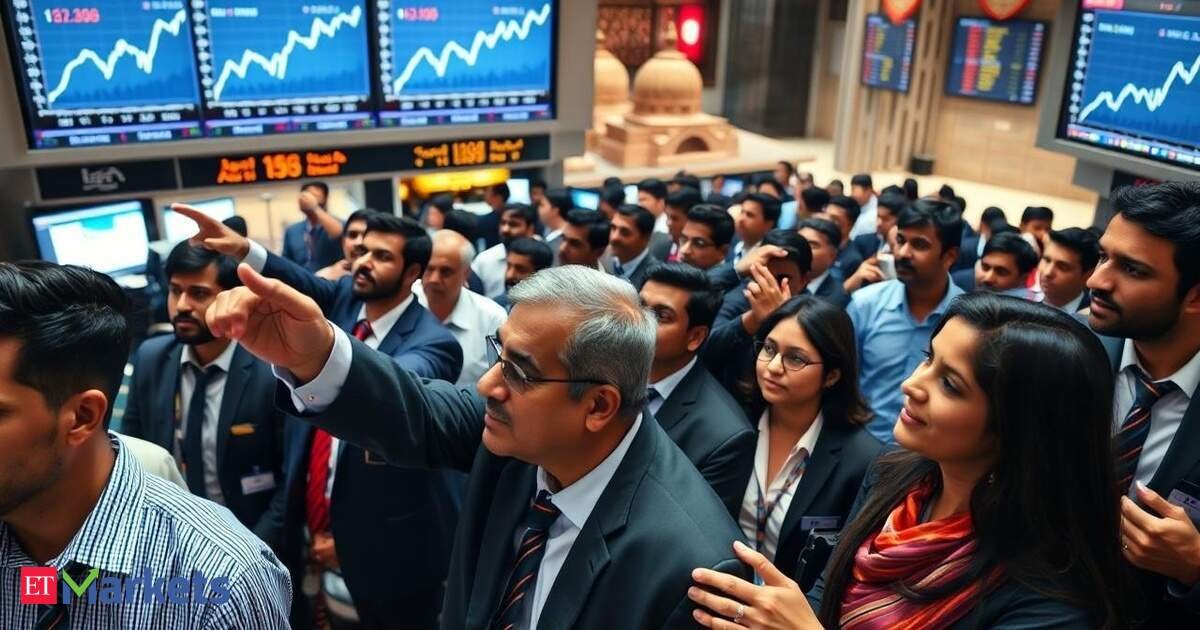Domestic institutional investor (DII) holdings as a proportion of all listed NSE companies rose by 44 basis points to 18.26% — the highest ever, according to a study based on Prime Database data since 2009. Overseas ownership edged down 34 bps to 16.71% — the lowest in 13 years.
DII holdings in NSE companies had surpassed those of foreign portfolio investors (FPIs) in the March quarter.
The gap has increased since local institutions flush with flows from individuals continue to pump money into the stock market, while overseas fund managers have opted to take a step back due to uncertainty over growth and valuations.
 ET Bureau
ET BureauRisk-off Sentiment
“The widening gap between FII and DII holdings indicates the ‘retailisation’ of corporate India,” said Siddarth Bhamre, head of research, Asit C Mehta Intermediates. “A major chunk of mutual fund flows is driven by retail investors, while institutional money is deployed through trusts and family offices.”Mutual fund ownership of Indian companies rose to an all-time high of 10.9% this quarter, from 10.56% in the June quarter, driven by strong retail flows through record systematic investment plan (SIP) contributions every month.Foreign investors sold stocks worth Rs 1.02 lakh crore between July and September this year. Domestic investors purchased shares worth Rs 2.21 lakh crore in the same period.
“Overseas investors have been sellers for a major part of the year, preferring US and other emerging markets like China, Taiwan and Korea,” said Sriram Velayudhan, senior vice president, IIFL Capital Services Ltd.
Foreign holdings in Indian companies have been on a slide since December 2020 but the pace of the cuts in their holdings has quickened since June 2023, when they held 18.96% of NSE-listed companies. In December 2020, their ownership was 21.21%.
Despite the risk-off sentiment among foreign funds, Indian equities have managed to hold up, thanks to unabated domestic flows. “Earlier, a pullback from global investors would result in a market crash,” said Pranav Haldea, managing director, Prime Database Group. “That is not the case any more, as the domestic inflows provide support.”
Selling by overseas investors points to caution about prospects.
“Mutual funds are mandated to deploy funds irrespective of valuations, while foreign investors have the option of deploying funds to lu-crative markets globally,” said Bhamre.
Overseas investors have, though, pumped money into domestic initial public offerings (IPOs). In October, they invested $1.2 billion (Rs 10,708 crore) in the primary market, which was the second-highest amount in the current calendar year after $1.7 billion (Rs 14,247 crore) in July. It was also the fourth consecutive month when FPIs invested more in the primary market than the secondary market.
“While global investors are selling in secondary markets, they have participated in the primary market issuances, which is a good sign,” said Velayudhan.
Despite inflows into primary markets, global investors have remained bearish on India overall as they consider valuations expensive, Bhamre said. “When the markets correct or witness time consolidation, FIIs are expected to lend support as retail money could move out in such a scenario,” he said.




